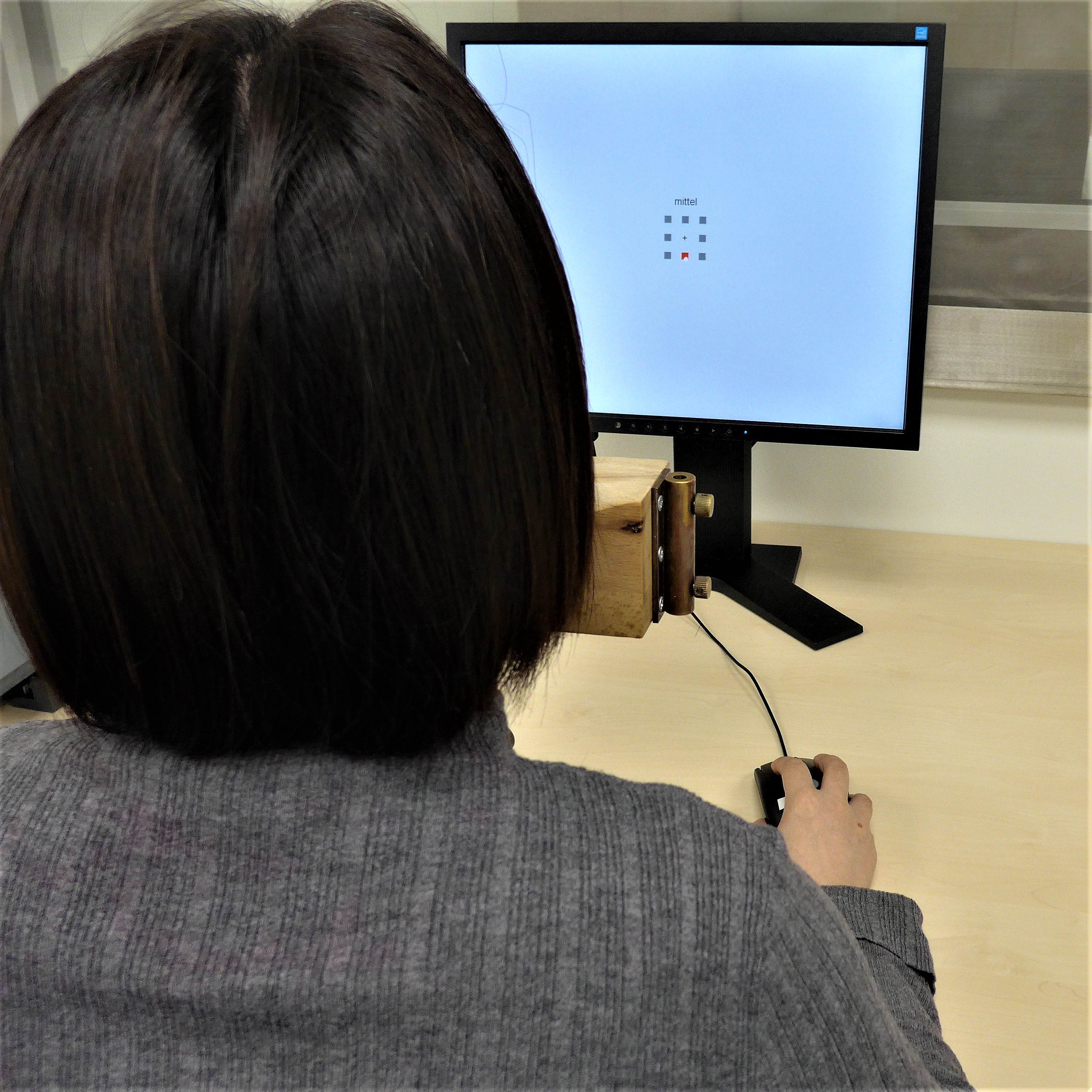2019-02-12

Among functional hemispheric asymmetries in humans, handedness is by far the most investigated. However, the underlying neural correlates remain unclear. Previous research has mainly focused on functional imaging methods and suggests differences in ipsilateral activation during unilateral hand movements between left- and right-handers. As EEG allows for a higher temporal resolution, researchers from the Biopsychology lab adapted the classical Tapley and Bryden task for use during EEG and tested this paradigm in 36 left- and 36 right-handers. Subjects had to click as fast and accurate as possible on eight squares distributed around a fixation cross in a given sequence with varying complexity. The lateralized readiness potential (LRP) is an event related potential component related to asymmetric motor preparation. Increasing complexity of sequences was associated with earlier and less negative LRP peaks. For the last response within a sequence, right-handers had more negative LRP peak amplitudes than left-handers. The effect of handedness on LRP peak amplitude in the first response was modulated by task complexity with a more negative LRP peak amplitude in right-handers than left-handers in simple, but not in medium or complex trials. This effect might be due to more symmetrical processing in right-handers with increasing task complexity, which complements findings from previous imaging studies.

Among functional hemispheric asymmetries in humans, handedness is by far the most investigated. However, the underlying neural correlates remain unclear. Previous research has mainly focused on functional imaging methods and suggests differences in ipsilateral activation during unilateral hand movements between left- and right-handers. As EEG allows for a higher temporal resolution, researchers from the Biopsychology lab adapted the classical Tapley and Bryden task for use during EEG and tested this paradigm in 36 left- and 36 right-handers. Subjects had to click as fast and accurate as possible on eight squares distributed around a fixation cross in a given sequence with varying complexity. The lateralized readiness potential (LRP) is an event related potential component related to asymmetric motor preparation. Increasing complexity of sequences was associated with earlier and less negative LRP peaks. For the last response within a sequence, right-handers had more negative LRP peak amplitudes than left-handers. The effect of handedness on LRP peak amplitude in the first response was modulated by task complexity with a more negative LRP peak amplitude in right-handers than left-handers in simple, but not in medium or complex trials. This effect might be due to more symmetrical processing in right-handers with increasing task complexity, which complements findings from previous imaging studies.